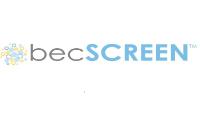becSCREEN
The becSCREEN™ Antimicrobial Susceptibility Test provides insight to bacterial vulerability above and beyond current MIC testing for the reasons cited below:
- Cutting edge technology
- Works with single and combination antibiotics
- Tests planktonic and biofilm states in the same assay for comparative purposes; recommended treatment based on MBEC (biofilm) results
- Promotes quicker, lasting recovery; resulting in improved quality of life for pets
- Reduces antibiotic usage as a result of choosing the correct antibiotics and minimum necessary dosage the first time
Downloads
The identification process
Once the sample has been received it will be plated on several types of selective media. The dominant colony(s) will be Gram stained to narrow down the antibiotics tested in the assay.
Once Gram status and growth rate have been determined the becSCREEN™ testing will commence.
The basic attributes of the becSCREEN™ Assay are:
Growth Device for Microbial Biofilms
Most bacteria and many fungi have been grown as microbial biofilms using the becSCREEN™ Assay. Innovotech scientists have used a variety of woods, plastics, paints and even hydroxyapatite (chemically similar to tooth enamel) in place of the standard 96 polystyrene pins on the lid of the assay, to mimic the natural environment of biofilms, to encourage growth. Similarly, experimental media sometimes require modification to resemble the natural setting of the bacterial biofilm organism. Innovotech scientists have grown biofilms in artificial urine, plasma, serum and many other media that reflect the natural environment of the organism.
Experimental Flexibility
This new version of the becSCREEN™ Assay (referred to as HTP Assay™, for high throughput screening) has flexibility to grow 96 identical biofilms of a single organism using a trough bottom to contain the inoculum of a single type (single organism or mixed biofilm). This application is best suited to situations where multiple biocides or drugs are being tested against a single or mixed colony biofilm.
Alternatively, in situations where several different mircobial and bacterial biofilms are being tested against single or multiple biocides, a second version of the becSCREEN™ Assay, (referred to as the P&G Assay™, for physiology and genetics), with a 96-well microtitre plate bottom allows any variety of microbial cultures to be inoculated into each well of the 96-well plate. This application is therefore suited to situations where single or multiple biocides are being tested against many different biofilms or where research is being conducted on a number of organisms.
Breadth of Results
The Assay produces both MBEC (minimum biofilm eradication concentration) values and MIC (minimum inhibitory concentration) values for the agents being tested. MBEC results are derived from the biofilm growing on the 96-peg lid while MIC results are derived from the organisms suspended in the wells of the microtitre plate as they are in a planktonic state. MIC values derived using the becSCREEN™ Assay have been validated against CLSI standards.
Reproducibility of Growth
Spectrum Labs has published and unpublished reports on the consistency of growth parameters using the becSCREEN™ Assay. This reproducibility covers a variety of organisms, pin materials and growth media.
Consistency of Controls
Positive and negative control wells are integrated into the experimental design for each plate.
High Throughput Screening
As the becSCREEN™ Assay can test up to 96 different compounds at one time, the speed of screening is dramatically increased compared to any other technology.
Flexibility of Endpoints
Endpoints of experimentation are up to the discretion of the researcher including turbidity measurement, plating and counting, metabolic dyes, etc.
Results Reporting
Once the samples have been processed, you will receive a report on the findings and treatment recommendations. Results are typically available within 7 working days of receiving the sample.
In the event that the biofilm is resistant to all antibiotics individually, (approx. 10%) additional testing will be carried out on antibiotic combinations to determine alternate treatment options. This testing is done automatically unless otherwise indicated by you, the Veterinarian, at an additional cost.
About 5% of the time, a culture may contain both gram negative AND gram positive strains. In this case both a gram +ve and gram –ve MBEC will be run to find the susceptibility to both strains, once again unless otherwise indicated on the order form.
Submitting a sample
Submitting a sample is easy, all submission forms can be obtained from Complete Veterinary Care or scroll up and click on the link under Downloads.
Samples: swab the infected area with a charcoal based swab and store in the recommended transport media.
Packaging: Once the swab is placed into the tube, package similarly to a serum sample (cotton balls to act as a shock absorber, inside a plastic sealable bag). Make sure to include your submission forms. Post to CVC the same day.
Links
becSCREEN own web page: www.becscreen.com
